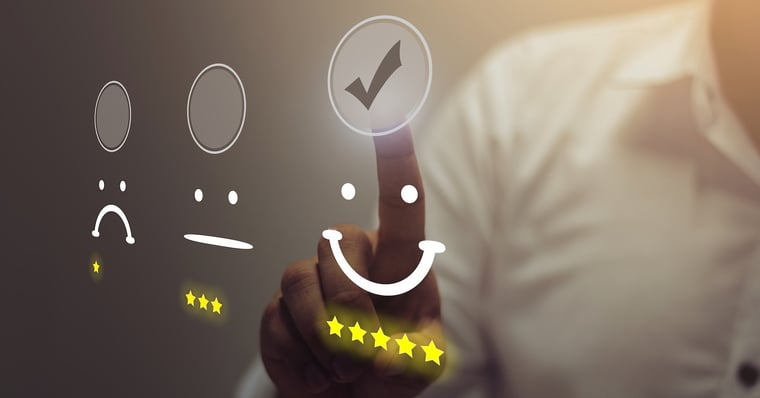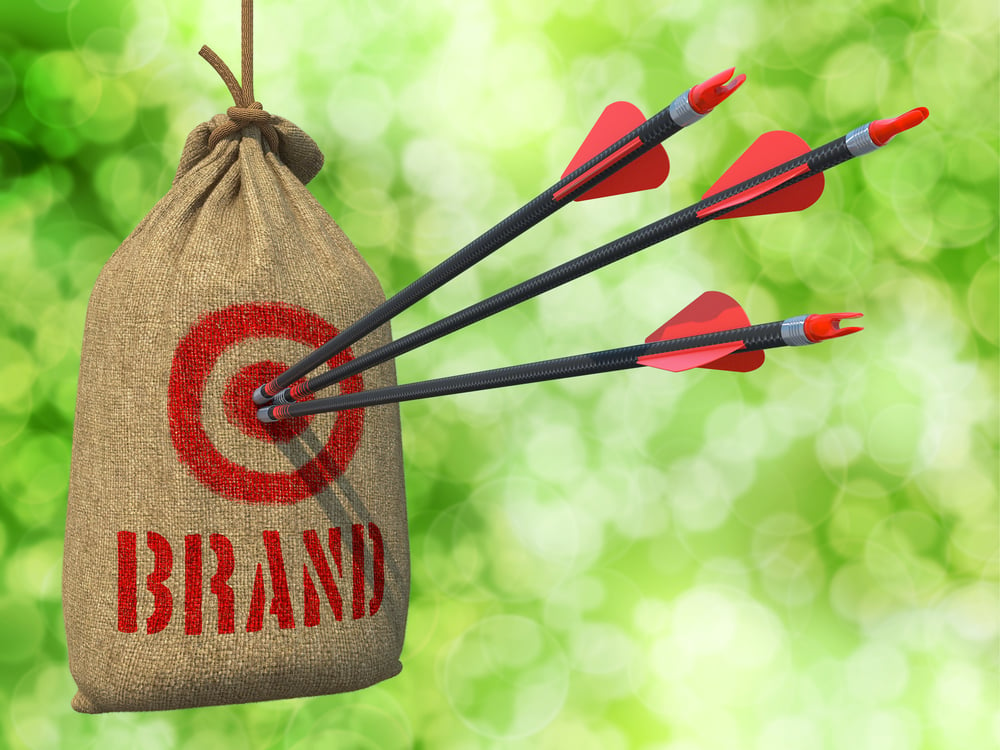While there are various similarities between the B2B vs B2C buying process, there are plenty of differences too. In this blog, we’ll be explaining the two buying processes, where they overlap and where they differ. Let’s get started:
- Similarities between the B2B and B2C buying process
- Differences between the B2B vs B2C buying process
Similarities between the B2B vs B2C buying process
All B2B and B2C relationships are built upon trust
B2B customers often place trust at the forefront of their purchasing decisions. For instance, when they’re in the market for new software, they’ll want a relationship with someone who can become a trusted advisor due to the large investment needed when updating their infrastructure.
So, they’re more likely to be interested in your company story and brand ethos and building lasting relationships with your team to ensure your values align with theirs.
 Despite the costs usually being higher with B2B, B2C consumers still expect a high level of trust with the companies they’re dealing with. With this being a major influencing factor, this can lead to many benefits if trust is met, from repeat purchasing to positive word of mouth.
Despite the costs usually being higher with B2B, B2C consumers still expect a high level of trust with the companies they’re dealing with. With this being a major influencing factor, this can lead to many benefits if trust is met, from repeat purchasing to positive word of mouth.
How can you build trust for your customers? One way is through personalisation tactics throughout their buying process, such as using their name or making relevant product recommendations, meaning you can stand out from the crowd. Find out more ways you can use personalisation to build trust here.
Both B2B and B2C buying journeys are complex
In an increasingly digital world, the ways that a business or individual can buy a product or service is endless. Companies are adopting more nurturing strategies, including email marketing campaigns, content creation, and targeted advertising, to boost customer engagement.
Though B2B customers typically take longer to decide (due to the complex factors at play which we’ll discuss later), both groups require some convincing before they’re ready to invest in your product or services.

Both B2B and B2C organisations need sales and marketing alignment
Regardless of whether you’re selling to a business or an individual, you need consistency with your marketing and sales efforts to create alignment. This allows you to steer your customers towards a buying journey that is:
- Relevant to their needs
- Targeted towards specific products and / or services
- Built upon a framework for relationship building instead of a transactional process
Differences between the B2B vs B2C buying process
B2B customers proactively identify needs to meet their business strategy
For both B2B and B2C customers, the buying process will start with finding a need. B2B customers are more likely to proactively identify a need and look for a solution to fulfil it as part of their business strategy.
Research has found that 57% of client decisions are made before they have even picked up the phone, showing proactivity to find the solutions based on their current challenges. For example, they might say, “To improve the efficiency of our financial reporting, we should invest in some software that can integrate with our business systems and consolidate information to simplify the overall process.”

B2C customers show their needs in an equivalent way, but they’re also often swayed by marketing and advertising materials that draw attention to new products. For instance, this could solve a need that may not have been clear without a business’s promotional efforts. So, in addition to saying something like, “I’m not sleeping very well, I should buy a new mattress”, they can also be influenced into buying said mattress even if they are sleeping well.
B2B customers buy products/services that meet certain specifications while B2C are more flexible
When most businesses are buying new products or services, they’ll have certain specifications in mind. Let’s take a PSA (Professional Services Automation) tool as an example. When looking to choose the software, they’ll factor in areas such as how much it costs, the features it offers, the level of integration needed, the overall benefits it’ll bring to the company, not to mention the potentially lengthy approval process.
So, B2B customers are unlikely to buy something on a whim. This results in their purchase decisions being more strategic and less emotional.

In contrast, B2C customers are more emotionally driven when it comes to their purchases. They often know what product/service they want (or what they want it to achieve) but they rarely have specifications to stick to. They’re a lot more flexible, susceptible to impulse purchases and will forgo their initial product/service if they find another they like better.
The B2B buying process is longer than B2C
As we mentioned above, B2B customers make more strategic buying decisions which means their buying process is often longer than B2C. They’ll evaluate complex factors such as:
- The cost of the item/service - does it fit with my budget?
- Supplier reputation - are they reliable? Are they reputable/credible in the industry? Do their brand values/ethos align with mine?
- The features and functionalities of the product/service - are the benefits worth the investment? Is this the right investment for my business?
B2C customers consider simplistic factors in comparison, such as:
- Value for money - am I getting the best deal? Can I find it cheaper elsewhere?
- Product/service reviews - how does the product/service compare to alternatives? What do independent reviews say?
- Brand reputation - how credible and reliable is the brand?

They’re also usually the only decision maker/stakeholder involved meaning their journey is shorter. However, it’s worth noting that despite their journey being shorter, 92% of consumers trust recommendations from friends. This means you should prioritise customer experience and focus on refining the touchpoints within their journey so you can receive positive word of mouth.
You can find out more about why great customer experience matters here.
B2B customers care about post-sales service
All customers expect outstanding service and that includes excellence even after the sale. B2B customers in particular want consistently excellent customer service before, during and after their sale.
Some examples of excellent post-sales service include:
- Following up to check how they’re doing and if there’s anything else needed
- Sending other materials/resources that are relevant to the recent purchase and/or customers might find interesting
- Being readily available to resolve any issues they’re experiencing (whether it’s related to their purchase or a new issue)
Ultimately, you’ll want to make it clear that you’re there for your customers whenever they need. This level of attention will satisfy your customers and boost retention, making it more likely that they’ll return to you for future purchases.

B2C customers, on the other hand, usually only turn to after-sales support when they’re experiencing a problem or want to complain. Factors such as being able to respond and resolve the issue quickly can make or break their loyalty. They don’t often appreciate being sent other resources, like guides or emails even if it’s relevant, as much as B2B customers do.
Learn how you can digitally transform in the B2B e-commerce space
While B2B and B2C customers have some similarities, such as sharing an end goal of wanting to buy something to satisfy a particular need, their buying journeys and values aren’t the same. And knowing those differences is key when you’re looking at enhancing your B2B customer journey.
In our guide, we address how customer experience has changed within an ever-changing landscape, and how you can introduce new e-commerce strategies to improve your customer journey, including:
- The ideal experience the 21st century B2B customer expects
- Our 5 recommended steps to digital transformation in the e-commerce space
- A real-life example of transformation in action
- And more!
Click below to download your guide today.
.jpg?width=100&name=JHAL%20headshot%20(2).jpg)
